 Whether you’re just starting out in your career or you’re a seasoned professional, chances are you will need a polished resume at some point. Even if you’re not actively seeking a new job, it is still a good idea to have an up-to-date document at the ready. One of the things that people struggle with most is figuring out the content. There are thousands of examples to look at for format and style, but the content is unique for each person. You know what you do at your job, but how do you convey that to others in a way that is meaningful, makes sense, and paints you in a positive light?
Whether you’re just starting out in your career or you’re a seasoned professional, chances are you will need a polished resume at some point. Even if you’re not actively seeking a new job, it is still a good idea to have an up-to-date document at the ready. One of the things that people struggle with most is figuring out the content. There are thousands of examples to look at for format and style, but the content is unique for each person. You know what you do at your job, but how do you convey that to others in a way that is meaningful, makes sense, and paints you in a positive light?
First, write down all of your responsibilities. Think about all of the things you do on a daily, weekly, or monthly basis. Keep in mind that some of these duties may be beyond your traditional job description and be things that you have picked up along the way.
Next, elaborate on your list to show importance. Now that you’ve figured out what you do, why does it matter? How does it impact the company or your clients? Focus on achievements that are meaningful and go beyond basic expectations of the job. Think about specific projects that you have worked on.
Nail down metrics if you can. Numbers speak, whether its monetary, percentages, or figures. You supervise a team, but how many people? What was your contribution to annual sales? By how much did you increase productivity or decrease costs? If you can’t find specific numbers, still consider incorporating verbs that emphasize results such as reduced, decreased, increased, grew, improved, or launched.
Think about how you achieved results. What policies, procedures, or processes did you put in place? Were you collaborating across departments or analyzing data from reports? Highlight your strengths and ability to generate change.
Also, determine what is important to employers. Take the time to read job descriptions and identify what employers are looking for in the types of roles you seek. Should you include examples of leadership, sales, collaboration, specific software or hardware capabilities, or global relations? Use keywords to your advantage to help you shape your resume and weed out unnecessary information. Focus on what potential employers want to know and be clear and concise with each bullet point.
As you’re rounding out your resume, don’t forget to include your education, any relevant certifications or licenses you have earned, and professional associations to which you hold membership. If you have been actively involved in volunteer work, include that as well to show your community engagement, skills you have honed, and the impact you have made.
Remember that your resume is more than just a laundry list of responsibilities – in fact, that is exactly what it shouldn’t be. Each statement should have purpose and show results, skills, leadership, or initiative. Make yourself come alive and stand out for what you bring to a company – not what you can do that everyone else does too.
Are you having trouble figuring out what to say or how to say? Let the team at Grammar Chic lend a hand. We’ll work with you to determine what should be highlighted on your resume and the best way to present yourself for the type of job you seek. Get started today by calling (803) 831-7444 or emailing resumewriting@grammarchic.net.
Amanda E. Clark founded Grammar Chic in 2008. She is a graduate of Eastern Michigan University and holds degrees in Journalism, Political Science, and English. She launched Grammar Chic after freelancing for several years while simultaneously leading marketing and advertising initiatives for several Fortune 500 companies.

